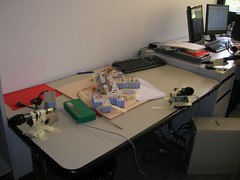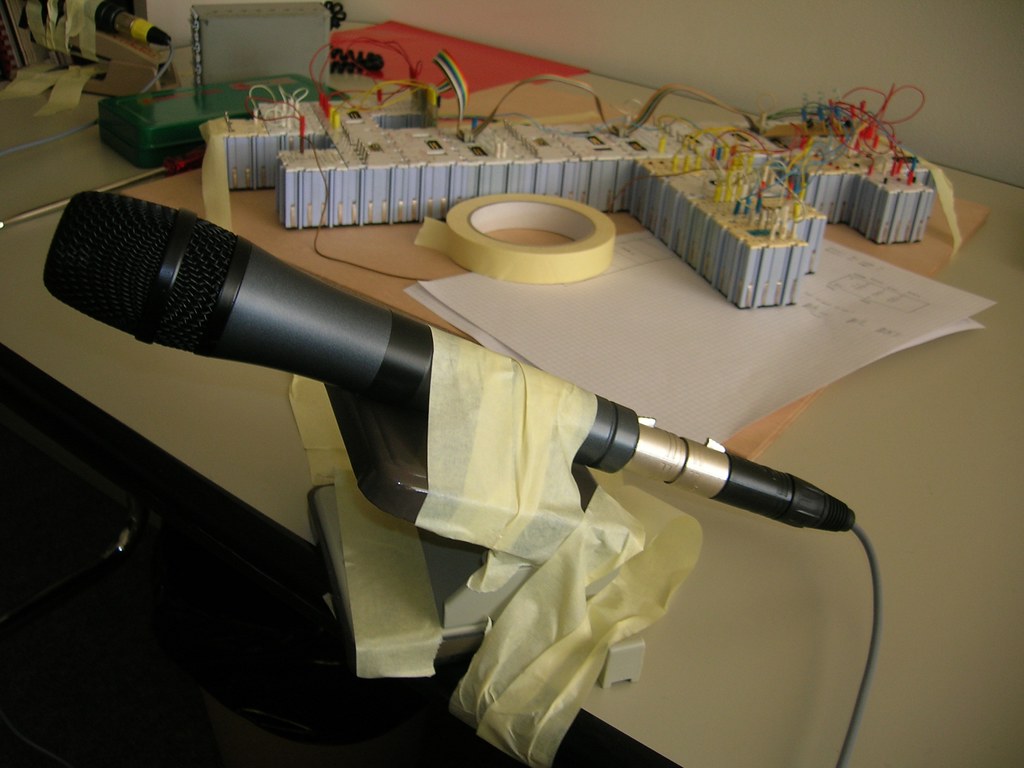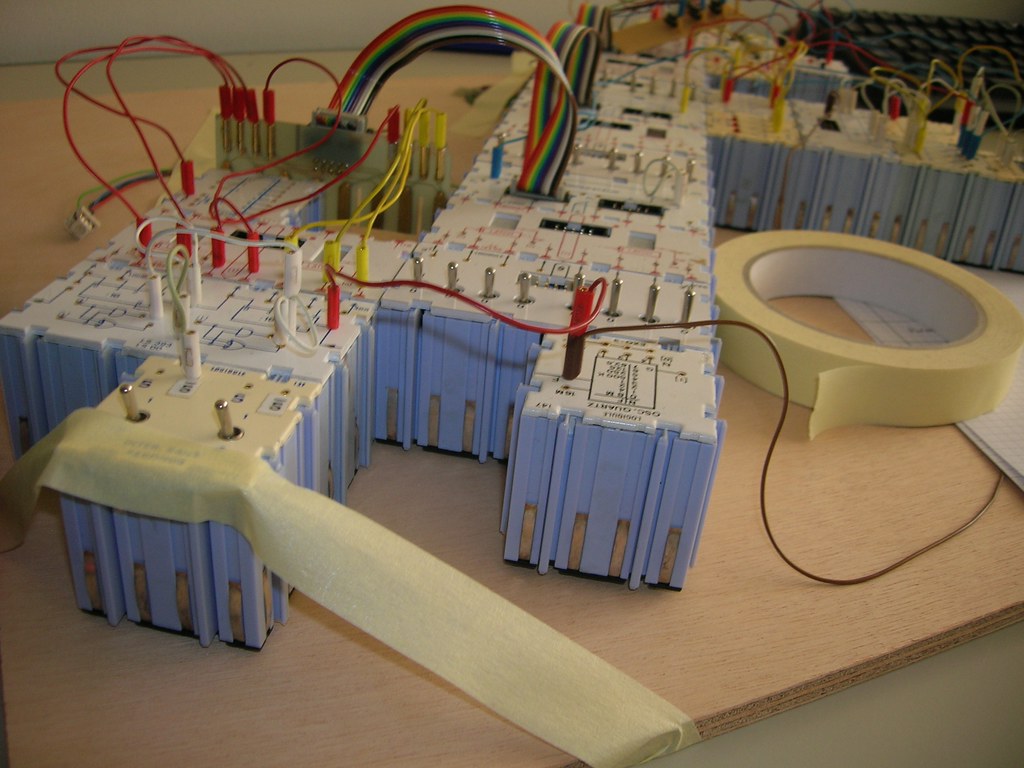Publications, installations, presentations & workshop papers
Books and thesis
Bleecker, J & Nova, N. (2009). A synchronicity: design fictions for asynchronous urban computing. Situated Technologies: NY.
Nova, N.. (2009) Les Médias géolocalisés: comprendre les nouveaux paysages numériques. FYP Editions.
Nova, N. (2007). The influences of location awareness on computer-supported collaboration', I&C Faculty Ph.D dissertation, under the supervision of Pierre Dillenbourg.
Journal papers
Nova, N. (2010). Relying on Failures in Design Research, ACM interactions, September+October issue.
Nova, N., Girardin, F., Dillenbourg, P. (2010). The Effects of Mutual Location-Awareness on Group Coordination. International Journal of Human-Computer Studies.
Girardin, F., Nova, N., and Dillenbourg, P. (2009). Detecting air travel to survey passengers on a worldwide scale. Journal of Location-Based Services, 3(3).
Girardin, F. and Nova, N. (2006). Getting Real with Ubiquitous Computing: the Impact of Discrepancies on Collaboration, eMinds, 1
Nova, N. (2005). A Review of How Space Affords Socio-Cognitive Processes during Collaboration. Psychnology, Vol. 3, No 2, pp. 118-148.
Nova N., Wehrle, T., Goslin, J., Bourquin, Y. & Dillenbourg, P. (2007): Collaboration in a Video Game : Impacts of Location Awareness. Journal of Multimedia, Tools and Applications, 32:161-183.
Conference full and short papers
Nova, N. & Jobert, T. (2011). User-Centered Design in Video Games: Investigating Gestural Interfaces Appropriation, Proceedings of ACM DPPI 2011 (June 22-25), Milano, Italy.
Nova, N. (2010). ARcetate: Augmented Reality with Acetate Paper. Papercomp workshop at 12th ACM International Conference on Ubiquitous Computing, Sep 26, Copenhagen, Denmark.
Dabic, S., Lund, K, & Nova N. (2010). Effects of Expertise, Mapping and Tutorial Format on User Experience when Gesturing with the Nintendo Wii. Conférence IHM 2010, Luxembourg.
Nova, N. & Jobert, T. (2009). Intuitivité et incorporation des interactions gestuelles chez les utilisateurs de jeux vidéo. IHM 2009, Grenoble: France.
Nova. N., Sangin, M. & Dillenbourg, P. (2008). Reconsidering Clark’s Theory in CSCW, Proceedings of the 8th International Conference on the Design of Cooperative Systems (COOP'08), Carry-le-Rouet, May 20-23, 2008.
Sangin, M., Nova, N., Molinari, G. & Dillenbourg, P. (2007). Partner Modeling is Mutual, Proceedings of the 8th iternational conference on Computer supported collaborative learning, Rutgers, State University of New Jersey, pp. 625-632
Nova, N., Girardin, F., Dillenbourg, P. (2006) "Investigating How Automatic Disclosure of Partners' Location Influences Mobile Coordination", Poster at Ubicomp 2006, Orange County, CA.
Girardin, F., Nova, N., Blat, J. (2006) "Towards Design Strategies to Deal with Spatial Uncertainty in Location-Aware Systems" , Poster at Ubicomp 2006, Orange County, CA.
Nova, N., Girardin, F., Molinari, G. & Dillenbourg, P. (2006): The Underwhelming Effects of Automatic Location-Awareness on Collaboration in a Pervasive Game, International Conference on the Design of Cooperative Systems (May 9-12, 2006, Carry-le-Rouet, Provence, France).
Nova, N., Girardin, F. & Dillenbourg, P. (2005): â"Location is not enough!": an Empirical Study of Location-Awareness in Mobile Collaboration. Proceedings of the third IEEE International Workshop on Wireless and Mobile Technologies in Education, November 28-30, 2005, Tokushima, Japan, pp. 21-28, IEEE Press: Los Alamitos, California (Acceptance rate: 11.6%)
Nova, N., Girardin, F. & Dillenbourg, P. (2005) Etude empirique de l'utilisation de la géolocalisation en collaboration mobile, Short Paper for IHM 2005, Toulouse, France.
Nova, N., Girardin, F. & Dillenbourg, P. (2005) A Mobile Game to Explore the Use of Location Awareness on Collaboration. HCI International 2005, Las Vegas, USA.
Nova, N. & Ortelli, R. (2004). Web-Based Syndication Enhanced with Social Navigation, 1st Workshop on Friend of a Friend, Social Networking and the Semantic Web, Galway, Ireland. [Had to cancel the presentation but the paper is there]
Nova N., Wehrle, T., Goslin, J., Bourquin, Y. & Dillenbourg, P. (2003). The Impacts of Awareness Tools on Mutual Modelling in a Collaborative Video-Game. In J. Favela and D. Decouchant (Eds.). Proceedings of the 9th International Workshop on Groupware, Autrans France, September 2003., pp. 99-108.
Nova N., Wehrle, T., Goslin, J., Bourquin, Y. & Dillenbourg, P. (2003). Awareness Tools and Mutual Modelling in a Collaborative Game. In Proceedings of International Conference on New Education Environments, pp. 83-88. Edited by C. Jutz, F. Fluckiger & Karin Wafler, Lucerne, May 26-28.
Nova N. (2002). Awareness Tools : Lessons from Quake-Like. In Proceedings of "Playing with the Future Conference" Manchester, UK.
Guin-Duclosson Nathalie & Nova Nicolas : Utiliser des connaissances abstraites ou contextualisees pour proposer differents types d'aide Technologies de l'Information et de la Communication dans les Enseignements d'ingénieurs et dans l'industrie, TICE2002, INSA de Lyon, 13-15 novembre 2002.
Guin-Duclosson N. & Nova N. (2001). Adapter l'aide à l'apprenant : utilisation de connaissances abstraites ou contextualiséees. In Sciences et techniques Educatives Vol. 1-2 (avril 2001). Hermàs : Paris.
Chapters in books
Nova, N. (2012). Question your game controllers!?, Playtime — Videogame mythologies, Maison d’Ailleurs, Yverdon, Switzerland.
Nova, N. (2010). Snapshots from a fictional asynchronous city. Catalogue for the HABITAR: Bending the Urban Frame exhibit, Laboral, Centro de Arte y Creacion Industrial, Gijon, Spain.
Nova, N. and Girardin, F. (2009). Framing the Issues for the Design of Location-Based Games, In Digital Cityscapes: Merging digital and urban playspaces. Peter Lang Publishers.
Huang, J., Cherubini, M.. Nova, N. & Dillenbourg, P. (2008). Why Would Furniture Be Relevant For Collaborative Learning? In Dillenbourg, P., Huang, J. & Cherubini, M. (Eds.) Collaborative Artefacts and Interactive Furniture Supporting Collaborative Work/ Learning. Kluwer Academic Publishers.
Nova, N. and Labrune, J.B. (in press, 2007). Des jeux vidéo au LifeGames: Perspectives tangibles et sociales des nouvelles formes d'interactions ludiques. In Franck Beau (Ed): "Le futur des MMORPG"
Nova, N. and Girardin, F. (in press, 2007). CatchBob! A Collaborative Treasure Hunt: Experimenting on Debord's Dérive with Pervasive Computing. In on Borries, Friedrich, Walz, Steffen P., Brinkmann, Ulrich, and Matthias Bottger (eds.), Space Time Play. Games, Architecture, and Urbanism. Birkhauser: Basel / Berlin / Boston.
Nova, N. (2006). La R&D en Game Design. In Genvo, S. (Ed.) Le game design de jeux vidéo : Approches de l'expression vidéoludique.
Workshop papers
Girardin, F., Nova, N. and Blackstock, M. (2007). Issues from Deploying and Maintaining a Pervasive Game on Multiple Sites. Workshop Common Models and Patterns for Pervasive Computing (Pervasive 2007).
Nova, N., Molinari, G. and Dillenbourg, P. (2007). Evaluating Mutual Modeling in CSCW environments. Workshop "Mutual Model in collaborative task", CSCL Alpine Rendezvous, Villars.
Dillenbourg, P. & Nova, N. (2006): The RoadForum: Sharing informal knowledge in a distributed team through a mobile audio environment. Workshop about Knowledge Sharing in Organizations, at the International Conference on the Design of Cooperative Systems., (May 9-12, 2006, Carry-le-Rouet, Provence, France).
Nova, N. and Dillenbourg, P. (2004). Impacts of Location-Awareness on Group Collaboration. Position paper for the workshop "Spatial Awareness in Collaboration and Group Interaction", 7th October EPFL.
Nova, N. and Girardin, F. (2004). Analysis of a Location-Based Multi-Player Game, Position paper for "Games and Social Networks: A Workshop on Multiplayer Games", 6th September University of Leeds, UK, British HCI conference.
Other writings
Nova, N., Girardin, F. & Dillenbourg, P. (2008). A Descriptive Framework to Design for Mutual Location- Awareness in Ubiquitous Computing. EPFL Technical Report LDM-REPORT-2008-001.
Nova, N., Traum, D., Montandon, L., Ott, D. and Dillenbourg, P. (2005), Do Partners Care about their Mutual Locations? Spatial awareness in virtual environments, EPFL Technical Report IC/2005/038
Nova, N. (2004). Socio-cognitive functions of space in collaborative settings : a literature review about Space, Cognition and Collaboration, EPFL Technical Report IC/2004/81.
Nova N. & Guin-Duclosson N. (2000). Liens entre l'apprentissage à partir d'exemples et le Raisonnement à Partir de Cas - Apports pour les Environnements Informatiques pour l'Apprentissage Humain. Rapport Interne du LISI RR2000-2
Press
De Super Mario à eBay, les mécaniques ludiques sortent du jeu vidéo, Amusement #5





 Why do I blog this? I am interested in the airport ground as a field of study in which drivers NEEDS information about others' whereabouts. The tool described here provide then with this information. I'd be delighted to have more data about its usage/inferences about others on the field.
Why do I blog this? I am interested in the airport ground as a field of study in which drivers NEEDS information about others' whereabouts. The tool described here provide then with this information. I'd be delighted to have more data about its usage/inferences about others on the field.